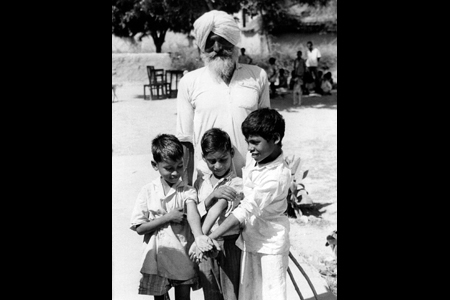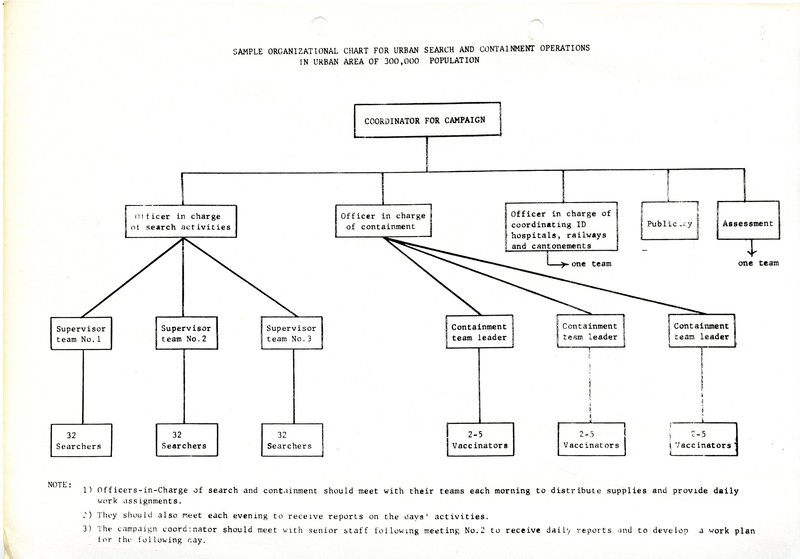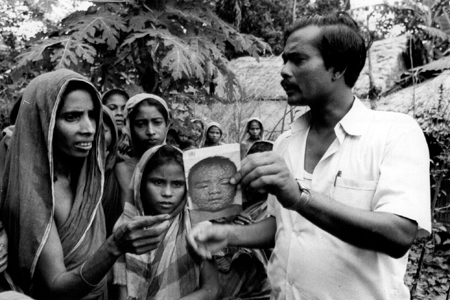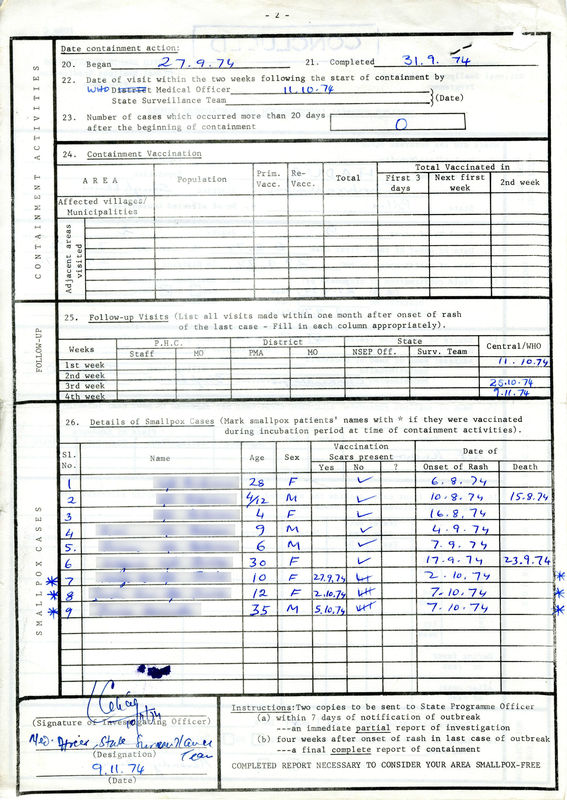Surveillance-containment searching
The strategy of “surveillance-containment” was simple in design. Teams of healthcare workers would actively seek out (i.e., search) for all potential cases of smallpox as quickly as possible. The affected individuals and their families or neighbours would be immediately isolated and vaccinated to prevent the further transmission of smallpox. This emphasis on active searches and detection and the containment of outbreaks was essential to eliminate infection foci.
The new method of active searches was implemented throughout India. By late 1974, the scale was enormous:
During a six-day period each month, health workers visited every one of the country’s 100 million households. Supervised by about fifty international advisors and an equal number of Indian officials, some thirty-three thousand district health personnel and more than 100,000 additional field workers conducted house-to-house searches in a total of 575,721 villages and 2,641 cities. (Tucker 108)
Surveillance-containment was data-driven and data-heavy. The documents that the health workers and epidemiologists had to complete in the field were abundant and various. They had to be submitted promptly and then quickly analyzed. This type of record-keeping was tedious but necessary. It is estimated that each nationwide search of smallpox consumed about eight tons of paper forms. (Tucker 108)

Challenges of mass vaccination

Training the health workers



